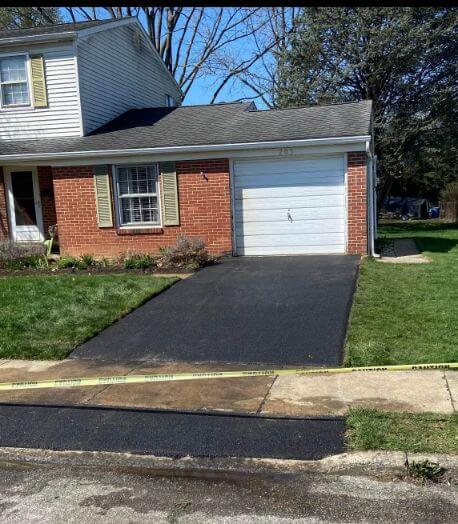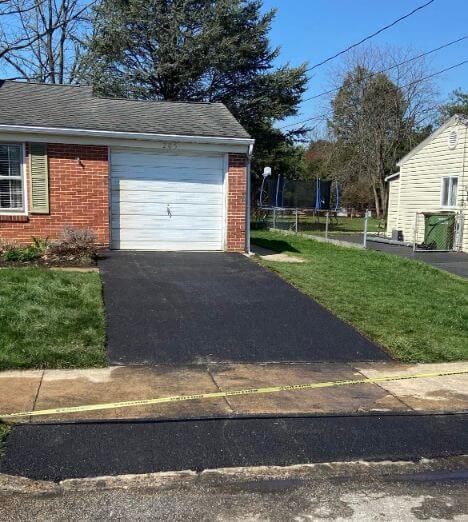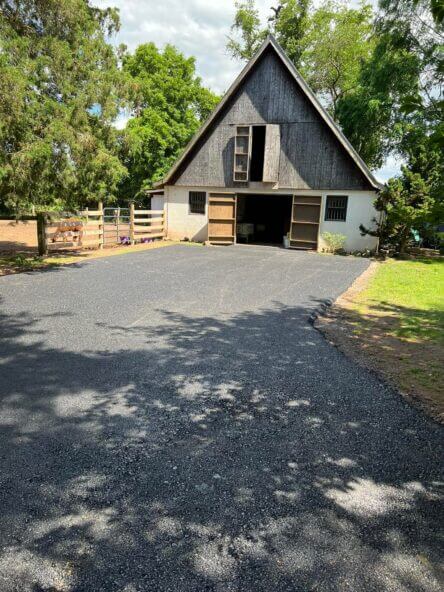What is the best surface for a driveway?
When you think of a driveway, your mind probably jumps to images of a black top surface on a rural road. However, driveways can be found in many different locations and conditions. They can be constructed from asphalt, concrete, gravel or cobblestone. They can also be found in urban city streets, suburban neighborhoods or back-woods country roads. You may even have one near your home. Whichever the case may be, the best surface for your driveway will vary based on your intended uses as well as environmental factors like rain and snowfall. Read on to discover more about what is the best surface for a driveway.
Asphalt Driveways
Asphalt is the most common type of driveway in the United Asphalt driveways can be found in both rural and urban areas. They are often used as the best surface for a driveway because of their durability, low cost, and ease of installation. When compared to concrete, asphalt driveways have several advantages including lower installation costs, better traction for vehicles, and better drainage.
However, asphalt driveways can be susceptible to potholes, RUT (rutting), and heaving. Potholes are often caused by water seeping into the asphalt. When it freezes, it expands, causing cracks in the asphalt. When the asphalt gets warmer, water seeps into the cracks and freezes. This cycle causes the asphalt to crack further and can lead to potholes.
RUT and heaving are caused by the freeze-thaw cycle. Over time, water seeps into the asphalt and freezes. This can cause the asphalt to break apart or heave. RUT is worse in areas with a large amount of precipitation and freeze-thaw cycles. RUT is often treated with asphalt sealants or a paving stone. Sealants are used to fill the cracks in the asphalt and make them less noticeable. Paving stones are used to repair potholes.
Concrete Driveways
Concrete is a great option for a driveway when aesthetics are a priority. Concrete driveways are often used as the best surface for a driveway when aesthetics are a priority. Concrete driveways can be molded into many different designs and can have many different colors and types of finish. Concrete also has a higher compressive strength than asphalt. This means that it will not sink as much when a heavy vehicle is parked on it. Concrete driveways are also more expensive than asphalt driveways and are heavier to transport. To maintain a smooth finish, concrete driveways require periodic sealing.
Concrete driveways are often susceptible to cracking. When this occurs, it is often due to shrinkage and expansion as well as freeze-thaw cycles. To prevent and repair concrete driveways, it is important to keep them well-watered. It is also important to keep them protected from extreme temperatures. When concrete is exposed to extreme temperatures, it will expand and contract. This can cause cracking in the concrete driveway.
Gravel Driveways
Gravel driveways are often used as the best surface for a driveway where aesthetics are not a top priority. Gravel is often used as the best surface for a driveway where aesthetics are not a top priority. It can provide great drainage and allow water to pass through quickly. Gravel also does not have as many compressive strength issues as concrete does. Gravel driveways are also much less expensive than concrete driveways.
When compared to asphalt, gravel driveways are less smooth, but they also have less maintenance. Gravel is not susceptible to potholes the same way that asphalt is. However, it is susceptible to erosion. Gravel is often used as the best surface for a driveway at the side of a home where little foot traffic occurs. When rainfall is heavy, gravel can become a mud pit.
Cobblestone Driveways
Cobblestones are often used as the best surface for a driveway when aesthetics are a priority. Cobblestones come in many different colors and patterns. This makes them great for adding aesthetic value to a driveway. Cobblestones are very durable and are great for retaining their appearance over many years. They are, however, not very good at providing good drainage.
Cobblestone driveways must be kept clean to prevent them from becoming clogged and slowing drainage. Cobblestone driveways are also often susceptible to freeze-thaw cycles. This can cause them to crack, shift, and heave over time.


Solid Brick or Stone Surface
Brick or stone driveways are often used as the best surface for a driveway where aesthetics are a top priority. These materials are very durable and are often used in walkways, patios, and flower beds. They are, however, not very good at providing good drainage when used as the best surface for a driveway. To combat this, it is often recommended that gravel be used underneath the brick or stone. This will allow water to pass through the bricks or stone and into the gravel, which will allow it to pass through quickly.
Summary
When deciding what is the best surface for a driveway, it is important to consider aesthetics, cost, and ease of maintenance. While each material has its advantages, it is important to consider the environmental factors that may affect the driveway. A drive that will experience a lot of freeze-thaw cycles or heavy rains may benefit from a sturdier material.
Driveways that are used primarily for driving or parking may benefit from a smoother material that provides better traction. Whatever the case may be, many different types of material can be used as the best surface for a driveway.

